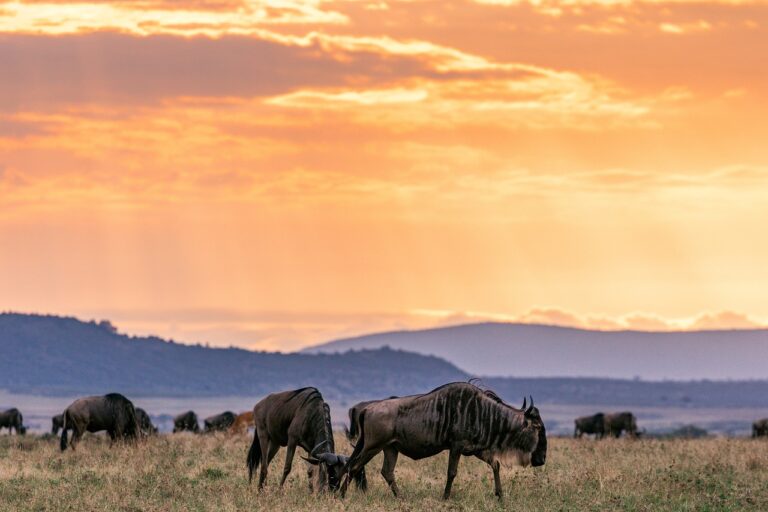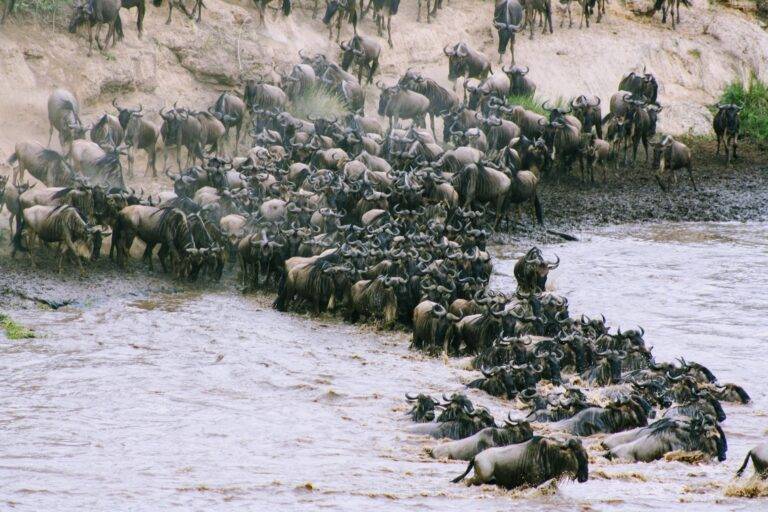Frequently Asked Questions About Great Wildebeest Migration
Is the biggest migration of a significant number of animals, including a large number of zebras, Thomson gazelle, and topi. They move every year in search of new grass and water.
The Great Migration is the world’s greatest herd migration of animals. In fact, the vast columns of wildebeest may be seen from orbit, with up to 1,000 animals per km2.
Over 1.2 million wildebeest and 300,000 zebras, as well as topi and other gazelles, migrate in a continuous cycle across the Serengeti-Mara environment in search of nourishing grass and water. Each wildebeest will travel 800 to 1,000 kilometers along age-old migration pathways, guided by its survival instinct. Hungry predators including lions, leopards, cheetahs, hyenas, wild dogs, and crocodiles ensure that only the strongest survive in this natural display dubbed ‘the greatest show on Earth.
The animals go from the Ngorongoro Conservation Area (but not inside the Crater itself) in Tanzania’s Serengeti, up through the Serengeti, over into Kenya’s Masai Mara, and back. The trek is fraught with peril: predators steal newborn calves, lion prides bring down the sluggish, bold creatures break legs on steep river slopes, crocodiles take their share of the stragglers, and the weak and tired drown.
The Great Migration may be experienced all year. The first few months of the year provide great predator encounters in Tanzania’s Serengeti, as this is the calving season for wildebeest, and babies are easier prey. By July, the herds had moved north into the middle Serengeti, when the wildebeest makes their first river crossing and risks their lives against crocodiles. From Late July, the herds pass into Kenya’s Masai Mara, and near the end of the year, the herds return to the Serengeti, where the animals prepare for the upcoming calving season and predator assaults.
Note – Migration depends on the weather patterns and not guaranteed
The Great Migration of Africa is home to the world’s largest wildlife extravaganza. The big migration of wildebeest and zebra through Tanzania’s Serengeti and Kenya’s Masai Mara.
*Booking your great migration safari in advance is suggested since there is usually a strong demand for people to travel, and so the camps and lodges tend to be completely booked as Tanzania and Kenya are the only areas to view the migration.
*Choose the relevant accommodation.
*Beforehand, research tribal cultural ethics such as those of the Masai, Datoga, and Hadzabe.
* Use proper gear, such as high-definition binoculars and cameras, to get up close and personal with animals and record breathtaking actions and moments.
The Frequently Asked Questions (FAQ) and Answers provide information on a Nndeeafrika luxury safari to help travelers begin their journey.


